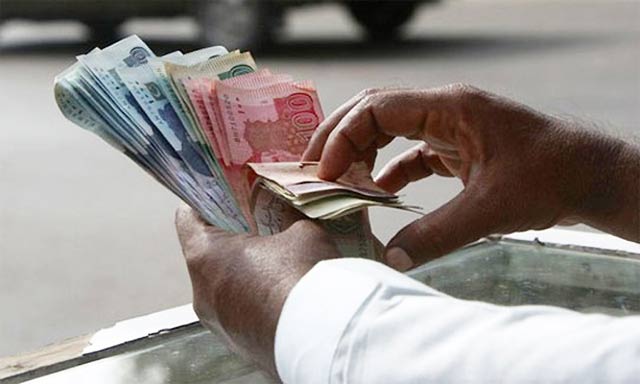KARACHI: The verdict for last year is in. Despite the ongoing efforts to promote digital banking, paper-based transactions continue to dominate the payments landscape in Pakistan according to the recently released numbers from the State Bank of Pakistan (SBP).
The SBP released the first and second quarterly reports on the Payment Systems Review for the Fiscal Year 2022-23, which covers a time period from July to December 2022. The SBP has been sitting on the reports for a few months and has only now gotten around to releasing them. While digital payments seem to be on a downward trend, it is not all bad news, particular for the central bank. According to the same data, the number of transactions through the SBP’s RAAST platform have seen a steady increase. In addition to this, transactions made at Point of Sale machines using debit and credit cards have also seen an uptick.
How much have digital payments fallen
The value of transactions conducted through paper-based methods stood at Rs 54.8 trillion at the end of Q2FY23, while transactions through e-banking amounted to Rs 42.3 trillion. Although the value of paper-based transactions increased by 2.7% from Rs 46.7 trillion in Q2 FY22 to Rs 54.8 trillion in Q2 FY23, the volume of these transactions declined by 6.4%. This suggests that for larger value transactions, paper-based methods are still preferred by businesses and individuals.
The report also shed light on the significant growth of internet and mobile phone banking users. Since Q4FY22, the number of internet banking users has increased by 21% (10.1 million users) and the number of mobile phone banking users has increased by 22% (15.0 million users). Transactions conducted through these channels have also shown continued growth in both quarters, with a combined quarterly growth rate of 11% in both volume and value in Q1FY23. In Q2FY23, volume grew by 18% and value by 15%.
Increased penetration of mobile and internet banking has led to an increase in e-banking. Contrastingly, the value of e-banking transactions declined by 5% in the first quarter of fiscal year 2023, while the volume increased by 4%. However, in the second quarter of 2023, e-banking showed impressive improvement in both volume (12.6%) and value (6.5%) of transactions, reaching 515 million and Rs 42.5 trillion, respectively.
On the contrary, the number of e-commerce transactions declined in both quarters but the value of these transactions increased by 11.6% in Q1FY23 and 2.2% in Q2FY23. This suggests that high inflation has impacted the number of e-commerce transactions, resulting in a lower volume but higher value of transactions.
RAAST records steady growth
One of the key highlights of the report is the impressive growth of Raast, the instant payment system launched by SBP. Raast was launched in 2021. Its first phase – bulk payments – was launched in January 2021. The other phase – Person to Person (P2P) was launched in February 2022.
Within the two years, the number of Raast users has skyrocketed from 15 million in June 2022 to a staggering 25.8 million by December 2022, showing an astounding growth rate of 72% in just six months. Similarly, the number of transactions processed through Raast has witnessed a remarkable increase, from 7.1 million in June 2022 to 21.5 million in December 2022, reflecting a staggering growth rate of 202.1%. The value of these transactions has also witnessed a significant surge, reaching Rs 578.6 billion in December 2022, compared to Rs 98.4 billion in June 2022, marking an impressive growth rate of 488.1%.
POS transactions continue to grow
The report also highlights the growth of Point-of-Sale (POS) deployments across the country, which increased by 3.8% compared to the previous fiscal year FY22, reaching a total of 108,899 by the end of Q2FY23. The first half of 2023 witnessed a significant growth in both the number of transactions and the value of payments made through POS, with a remarkable 59% increase in transactions from 59.5 million in first half of fiscal year 21-22 to 94.8 million in the same corresponding months in fiscal year 22-23 and a substantial 57% increase in payment value from 313.1 billion in half of fiscal year 21-22 to 493.2 billion in first half of fiscal year 22-23.
Specifically, in December 2022, a total e-commerce merchants registered stood at 11,438, an increase of 10.16% quarter-on-quarter basis, merchants registered with banks/MFBs at 5954, whereas merchants registered with EMIs stood at 5484. This change in trend indicates that banks and MFBs have taken the lead over EMIs in the first half of 2023.
This increase in POS deployment and merchants being onboarded by banks/MFBs and EMIs was a result of an incentivisation of fixing price floor of 1.5% on Merchant Discount Rate (MDR). However, in March 2023, the SBP made changes to the MDR and IRF regulations. It removed the price floor of 1.5% on MDR and capped IRF at 0.2% for debit cards and 0.7% for credit cards. The impact of these policy changes on the number of POS deployed and the number of payment cards issued in the upcoming quarters remains to be seen, and will reveal the success or counterintuitiveness of these measures by the SBP.

























Therefore our country faces these crises such offline businesses also effected that also decrease the value of currency